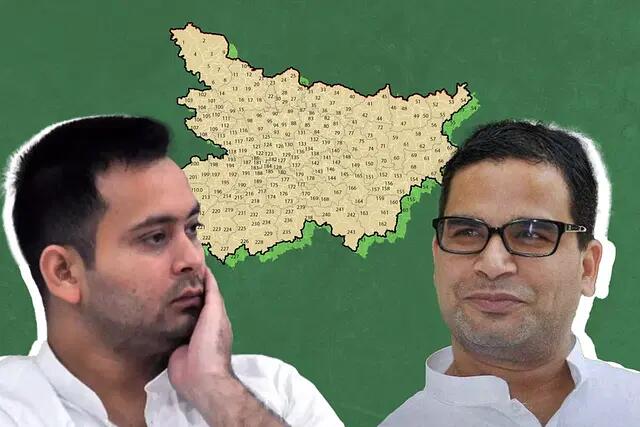On 28 July 2024, Prashant Kishor’s political group, Jan Suraaj, welcomed four new members. This event signifies more than just a routine political change. The addition of these members brings significant changes to the political landscape of Bihar.
Anand Mishra’s Entry
The most notable new member is Anand Mishra, a former Indian Police Services (IPS) officer known as ‘Assam’s Singham’. Mishra recently ran for the Lok Sabha from Buxar after being denied a ticket by the Bharatiya Janata Party (BJP). He is highly popular among young voters and is expected to bring a fresh and dynamic perspective to Jan Suraaj.
Other Key Members
Joining members are Ziyauddin Khan, state general secretary of Janata Dal (United) or JD(U), and Dr. Jagriti Thakur, granddaughter of Bharat Ratna Karpoori Thakur. Additionally, Professor Rambali Singh Chandravanshi, a former president of the extremely backward cell of Rashtriya Janata Dal (RJD), has joined Jan Suraaj. Chandravanshi lost his legislative council position earlier this year after opposing Lalu Yadav. These new members add a diverse range of experiences and backgrounds to Jan Suraaj, enhancing its appeal across different voter segments in Bihar.
Impact on RJD
The RJD views Jan Suraaj as a significant threat, referring to it as the BJP’s B-team. Many RJD members are switching their allegiance to Jan Suraaj, causing concern within the party. RJD Bihar chief Jagadanand Singh has warned party members against supporting Kishor’s team, even suspending five leaders from the Bhagalpur unit for allegedly supporting Jan Suraaj. This shift indicates growing discontent within the RJD ranks and highlights Kishor’s ability to attract support from established political entities.
Electoral Strategies in Bihar
Kishor is addressing the Muslim community, criticizing RJD’s use of their votes through fear of the BJP. He argues that RJD has not delivered for Muslims despite securing their votes. RJD’s Muslim-Yadav (M-Y) alliance, which accounts for 32% of the vote, is being challenged by Kishor’s proposed Muslim-Dalit (M-D) alliance, which could potentially secure 37% of votes. This new strategy aims to broaden the appeal of Jan Suraaj and position it as a formidable contender in Bihar’s political landscape.
Impact on JD(U)
Jan Suraaj also poses a threat to JD(U). While JD(U) has not commented publicly, Kishor’s focus on Extremely Backward Class (EBC) candidates is likely causing concern. EBCs make up 36.01% of Bihar’s voters. Lalu Yadav and later Nitish Kumar have historically mobilized this group, but Kishor’s plan to field 75 EBC candidates could undermine JD(U)’s influence. By targeting this significant voter base, Kishor aims to disrupt the established electoral dynamics and gain a competitive edge.
Savarna Voters
For the BJP, the potential loss of Savarna voters to Jan Suraaj is concerning. Savarnas, affected by the ‘Jungle Raj’ era, prioritize development and stability. They supported Nitish Kumar and Narendra Modi in the past for these reasons. Kishor’s emphasis on development and social justice, without the violent undertones associated with RJD, appeals to Savarna voters.
Left-Wing Politics in Bihar
Jan Suraaj’s rise also threatens far-left parties in Bihar. These groups rely on a strong cadre base and local issues, areas where Kishor is gaining ground. His interactions with locals and focus on development resonate more with voters compared to the left’s traditional approaches. By actively engaging with the community and presenting practical solutions, Kishor is drawing support away from left-wing parties, further solidifying his position in Bihar politics.
The Future of Bihar Politics
Prashant Kishor’s entry into Bihar politics with Jan Suraaj is significantly altering traditional electoral strategies. By attracting prominent figures and addressing key voter groups, Kishor is reshaping the political dynamics in the state. His approach could change how political alliances and voter bases are structured in Bihar. As Jan Suraaj continues to grow, it will be interesting to see how other parties respond to this new political force and what impact it will have on future elections in Bihar.
